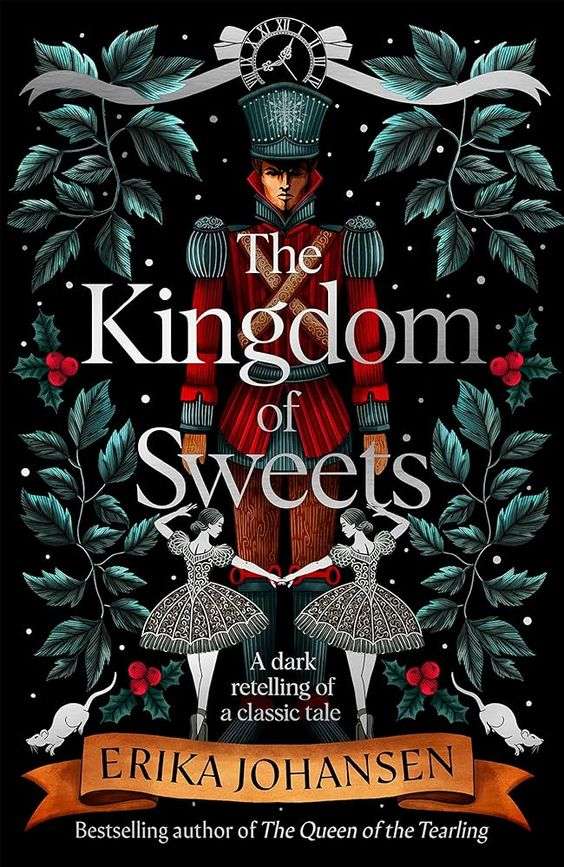The Kingdom of Sweets by Erika Johansen
Transworld, hb, £17.47
Reviewed by Mikaela Silk

Natasha’s life has been defined by a single word, spoken over her at her christening by the mysterious and powerful Drosselmeyer. That word was ‘dark’. Yet more impactful even than this was the word he spoke over her twin, Clara. Forevermore one was known as the dark sister and the other the light sister; you can imagine who most people preferred. For a long time, the bonds of sisterhood held strong despite their differences. Until Natasha began to realise that the darkness she lived in was that cast by her sister’s shadow. When opportunity comes knocking, what will Natasha be willing to do to throw off her sister’s shadow once and for all?
This book is labelled as ‘a dark retelling of a classic tale’ but I disagree. This description does not do justice to Erika Johansen’s unique imagination. Whilst some of the characters are familiar and the opening chapters follow a somewhat expected line, there is so much more to this book than the classic tale. The ‘kingdom of sweets’ may have served as an initial inspiration, but the world of this book is much darker and unpredictable and dangerous. As the villain of the story, the Queen outstrips the Rat King by miles; her form is more ominous, her power more mysterious, and her goals much more twisted. Beyond the early motifs of the Nutcracker tale, the twisting plot of this book takes on a whole new life. By the end of the book, this original inspiration is almost unrecognisable.
Even the main character, Natasha, is an invention of the author’s own mind; one with both gifts and flaws. She is portrayed as the mirror opposite of her sister, but the depth of character within her cannot be easily compared to another. In a similar way, it is made clear from the very beginning that Clara’s perfection is a painted-on illusion and that, for better or worse, there are unknown depths within her character. Other characters, such as Conrad, are one-dimensional. However, this is not necessarily a bad thing as his character serves the exact purpose that the plot requires of him.
Those who hate a cliffhanger ending will be glad to hear that this book wraps everything up very neatly in the final pages. Although that doesn’t mean that there is a happily ever after…
